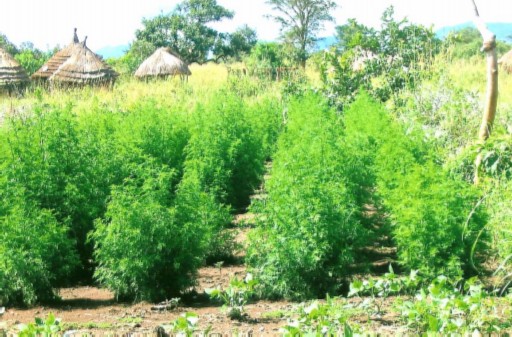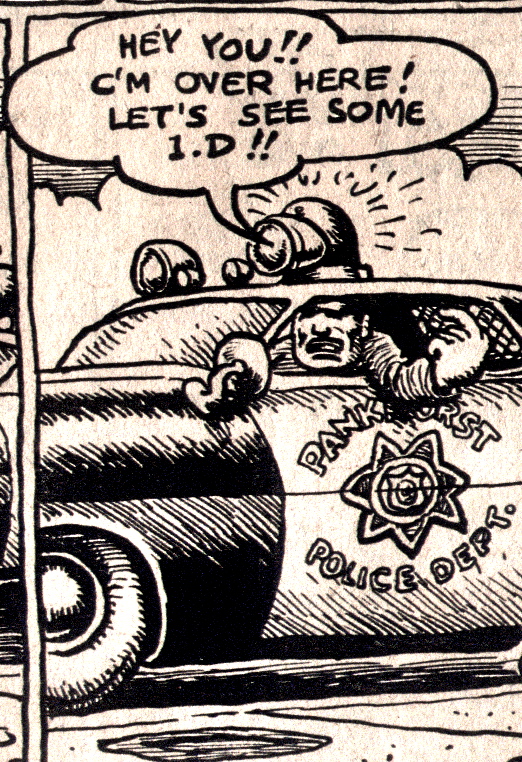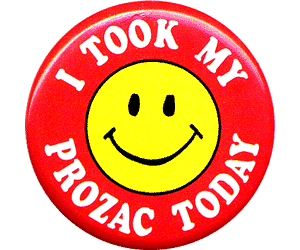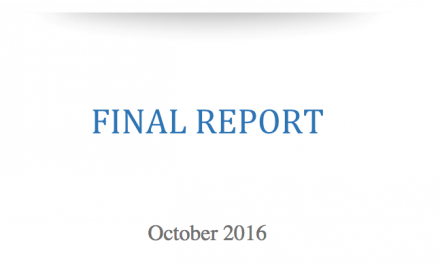By O’Shaughnessy’s News Service
An anti-malaria drug given to U.S. troops, Lariam (mefloquine), is a synthetic designed to mimic the effects of a plant compound (quinine).
“Mefloquine has serious drawbacks,” according to Donald McNeil of the New York Times, “including nightmares and paranoia. In 2003, dozens of American Marines in Liberia got malaria after refusing to take pills because of military scuttlebutt that several Special Forces soldiers who killed their wives after returning home from Afghanistan in 2002 had been driven insane by the drug.”
Mefloquine was developed by U.S. scientists during the war in Vietnam, when drug-resistant malaria was rampant. At the same time, Mao had directed Chinese scientists to find a treatment to provide for Viet-minh forces. They came up with artemisinin, a compound derived from a variety of Artemisia (wormwood), a large genus of shrubs that includes Artemisia absinthium, from which the famous drink is made.
One Into Two
The amazing backstory was recounted by Donald McNeil of the New York Times. The Mao-funded researchers, he writes, took two approaches:
One group screened 40,000 known chemicals. The second searched the traditional medicine literature and sent envoys into rural villages to ask herbal healers for their secret fever cures.
One herb, qinghao, was mentioned on tomb carvings as far back as 168 B.C. and praised on medical scrolls through the centuries, up to the 1798 Book of Seasonal Fevers. Rural healers identified qinghao as what the West calls Artemisia annua, or sweet wormwood, a spiky-leafed weed with yellow flowers.
In the 1950s, officials in parts of rural China had fought malaria outbreaks with qinghao tea, but investigating it scientifically was new. It also had at least nine rivals from traditional medicine with some anti-malarial effects, including a pepper.
In the lab, qinghao extracts killed malaria parasites in mice. Researchers tried to find exactly which chemical worked, which plants had the most, whether it could cross the blood-brain barrier to fight cerebral malaria, and whether it worked in oral, intravenous and suppository forms.
Outmoded equipment slowed research. But by the 1970s it was known that the lethal chemical, first called qinghaosu and now artemisinin, had a structure never seen before in nature: In chemical terms, it is a sesquiterpene lactone with a peroxide bridge. Trials in 2,000 patients showed that it killed parasites remarkably rapidly.
However, the body eliminated it so fast that any parasites it missed made a comeback. So scientists began mixing it with slower but more persistent drugs, creating what is now called artemisinin combination therapy. (One new combination includes mefloquine.)
A 2006 history of the project by Zhang Jianfang, its former deputy director, contains some gripping details: petty disputes between rivals, Cultural Revolution street fighting that forced one laboratory into a basement, project doctors’ living on brown rice and vegetables as they did clinical trials in remote villages in China’s tropical southern mountains, and other doctors’ hiking the Ho Chi Minh Trail with the Vietcong.
Mao died in 1976; Project 523 was officially disbanded in 1981, though clinical work continued.
In 1979, Dr. Keith Arnold, a malaria researcher in Hong Kong who had helped the Army develop mefloquine, wangled his way into China, hoping to test his drug there. He met Dr. Li Guoqiao, who was testing artemisinin variants. They decided to try head-to-head trials, and the Chinese mystery drug beat his, Dr. Arnold said.
Soon, World Health Organization scientists asked for articles from China’s medical journals, the first of which had been published in 1977, in response to reports that a Yugoslav chemist was experimenting with wormwood. In 1982, The Lancet had an article by Chinese researchers. It won a prize, but the check, in British pounds, could not be cashed in China.
Shortly thereafter, Dr. Arnold said, Walter Reed scientists found wormwood growing on the banks of the Potomac and extracted artemisinin. Nonetheless, the drug languished. The W.H.O. did not endorse it until 2000, and it was not widely available until 2006.
The reasons for that delay are disputed. China was in political disarray. Different labs in and outside China were working on derivatives. Patent law had vanished under communism, and China never took out Western patents, so there was no way a major drug company could get a monopoly and make big profits. Malaria was a disease of the poor, and today’s big donor funds did not exist.
Aid agencies could not buy drugs that were not W.H.O.-approved. For years, Dr. Arnold said, he tried to get permission for his Chinese collaborators to do clinical trials in Thailand and Vietnam, but the W.H.O. stalled. (As a United Nations agency, it is rarely bold, but the 1990s were a decade of particularly low morale and constant infighting.)
As nearly one million African children a year died, Dr. Arnold denounced its indecisiveness as “genocidal.”
The American military stuck with mefloquine, despite its expense. As late as 2002, as Doctors Without Borders clamored for artemisinin, an adviser to the United States Agency for International Development dismissed it in an interview with The New York Times as “not ready for prime time” and defended chloroquine and other old, cheap drugs even though resistance to them was widespread.
A Swiss company, Novartis, finally broke the logjam. It bought a new Chinese patent on a mix of artemether, an artemisinin derivative, and lumefantrine, another Chinese drug, and took out Western patents, planning to sell it under the name Riamet at high prices to tourists and militaries; in 2001, it agreed to sell it nearly at cost to the W.H.O. under the name Coartem.
The money to buy the drug on a large scale became available with the creation of the Global Fund to Fight AIDS, Tuberculosis and Malaria in 2002 and the Bush administration’s introduction of the President’s Malaria Initiative in 2005. Now, about 150 million doses of several combinations are bought for poor countries each year.
With that victory, surviving Project 523 scientists and some outsiders began vying for credit. In 1996, a Hong Kong science foundation recognized 10 team leaders. In 2009, Zhou Yiqing got the European Patent Office’s “Inventors of the Year” award for Coartem.
In September, the $250,000 Lasker Award for clinical medical research was given to Dr. Tu Youyou, former chief of the Institute of Chinese Materia Medica in Beijing. The Lasker committee named her “the discoverer of artemisinin.”
Some Chinese and Western malariologists were outraged. Dr. Nicholas J. White, a prominent Oxford malaria researcher, said it was “not fair to credit this discovery to one individual”; he named others he considered equally deserving, including the clinical trial leader, Dr. Li, and a chemist, Li Ying.
Dr. Arnold, whose work with Dr. Li was mentioned in the Lasker citation, agreed. Richard K. Haynes, a malaria researcher and historian at the University of Science and Technology in Hong Kong, called naming one inventor “a travesty.”
The Lasker Foundation declined to comment, other than to note that Dr. Tu’s citation mentioned that Project 523 was a large collaborative effort.
In an interview before the ceremony, Dr. Tu, 81, argued that she deserved it because her team had been the first to isolate qinghao’s active ingredient while other teams worked on the wrong plants.
Also, after rereading a manuscript by Ge Hong, a fourth-century healer, prescribing qinghao steeped in cold water for fever, she realized that boiling, the typical extraction method, was destroying the active ingredient. She switched to ether, and qinghao became the first plant extract 100 percent effective at killing malaria in mice.
And before human testing began, Dr. Tu said, she and two colleagues took it themselves to make sure it was not toxic.
Before the West even heard of the drug, she said, she was one of the four anonymous authors of the initial 1977 paper, and in 1978, she was chosen to accept the Chinese government’s overall award to Project 523.
However difficult winnowing the field would prove, the Nobel Prize committee would be forced to do it anyway. The Nobel rules specify no more than three winners. And no posthumous prizes, either — meaning Mao would be out of the question.
But Wait, There’s More…
Donald G. McNeil, Jr. returned to the subject of Artemisia Jan. 26 with a story that confirms what millions of cannabis users have come to understand: an entourage effect is exerted by compounds in healing herbs. The Times’ Science Section hedded his piece, “Hold the Drug, Go Straight to the Source.”
Ground-up artemisia plants, from which the anti-malaria drug artemisinin is derived, appear to work much better than the refined drug does by itself, according to research at the University of Massachusetts.
Artemisinin, discovered by Chinese scientists in a project started by Mao Zedong to help the North Vietnamese, has become the newest malaria miracle cure. But parasites resistant to it have emerged.
Scientists infected mice with two strains of rodent malaria — one that is already artemisinin-resistant and one that is not, but is biologically similar to Plasmodium falciparum, the deadliest strain of human malaria. They then fed the mice pure artemisinin or dried artemisia annua plants bred for high drug content at Worcester Polytechnic Institute.
The study was published this month by the Proceedings of the National Academy of Sciences.
The whole plant cured mice with artemisinin-resistant malaria. In mice with the dangerous strain, parasites resistant to the plant failed to emerge even after 49 successive infections — three times as many as it took for parasites resistant to artemisinin alone to evolve.
“We don’t know what the precise mechanism is,” said Stephen M. Rich, a University of Massachusetts microbiologist and the paper’s lead author, but the plant contains dozens of toxic chemicals that repel or kill fungi, bacteria, insects and even rival plants. Some may protect the artemisinin from being broken down by the liver. Also, he said, malaria parasites share an ancestor with plants and contain vestigial versions of the chlorophyll-producing organelles. The natural herbicides some plants use to kill rivals may also work on them, he said.





